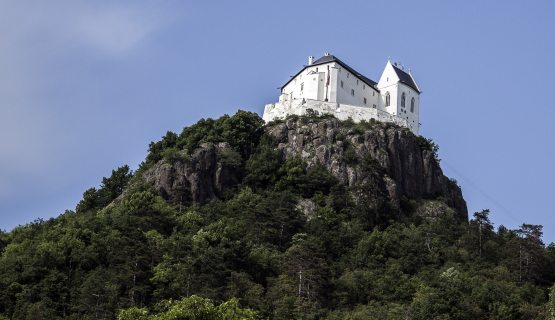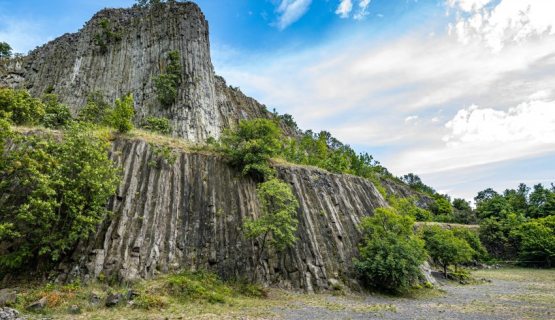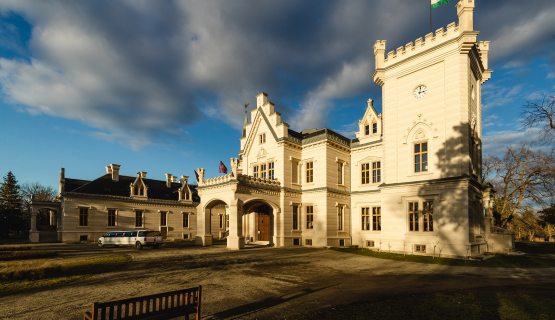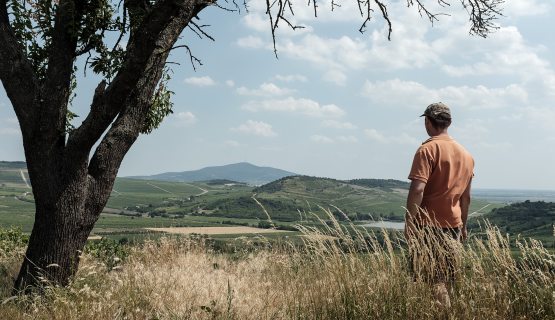Fabulous Hungarian castles and forts worth visiting even in winter
Hungary has so many beautiful castles and impressive forts that it would be a shame to stay indoors in winter instead of going on a trip. Whether you visit them for the stunning scenery or the historical atmosphere, you can be sure to be energized for days. We've rounded up eight amazing places in Hungary worth planning a trip to.

The fort of Füzér
Two years ago, when I came here on an excursion in January the area was covered in fresh snow. The characteristic building is perched on a 500-meter volcanic rocky peak like a real jewel overlooking the village - it's no coincidence that it's one of Hungary's seven natural wonders. One of the most beautiful halls of the castle, built in the early 13th century, is undoubtedly the chapel with its stained-glass windows. In the cold months from the terrace of the building, you can enjoy a beautiful view of the frosty forests, snow-covered fields, and mountains. Open all year round, visitors to the complex can learn about the history of the Aba, Perényi, Báthory, Nádasdi and Károlyi families, and see permanent exhibitions (Discover the Holy Crown, the castles of the Carpathian Basin, the coins of Füzér, the furniture exhibition or the stone gallery).
The castle is believed to have been built by the Aba clan in the Árpád era, and its first written mention dates back to 1264. The castle was bought by Andrew II in the 13th century and was part of the royal estate until the Tatar invasion when it was donated back to the Abas. After the Battle of Rozgony, Charles I confiscated it and it became the property of the crown guard Peter Perényi, who, instead of taking the Holy Crown to its usual place, the Visegrád Castle, had it transported to Füzér and hid it in the palace or chapel for nearly a year.
The fort of Regéc
Through the oak-hornbeam forests, a small climb takes us to the serpentine path leading to the fortress. When you reach the fortress of Regéc, built in the 1200s, standing on a 639 m high hill, you will see the Regéc-Mogyoróskai basin and the magnificent panorama of the Zemplén Hills. Ferenc Rákóczi's son, Ferenc Rákóczi II, was raised here until the age of five under the supervision of his mother, Ilona Zrínyi, as a monument on one of the castle walls testifies. The castle, which was destroyed in 1686, has been gradually restored since 2003 and now offers visitors high-quality exhibition halls and service facilities. The site features interactive demonstrations, including how a cannon looked and worked, and what was the defense formation like according to which medieval castles were built.
The castle of Boldogkő
Boldogkő Castle stands on a huge barren rocky ridge - with its thick stone walls and medieval atmosphere, it's an instant hit. In the Middle Ages, it changed hands frequently, one of the last lords being Imre Thököly. It is often referred to by locals as the home of fairies. It is said that King Béla IV, fleeing from the Tatars after the Battle of Muhi, was hidden in his cellar by Bodó, the old master fruit dryer, who pretended to be deaf when the Tatars arrived. In gratitude, the king gave him land to build a castle to protect him.
The castle was built in seven years by the suitors of Bodó's seven daughters, and after the weddings, it was named Boldogkő (“Happy Rock”) at the suggestion of Béla IV, who said that the seven daughters, the seven fairies, were the happiest here.
Even though you don't have to climb as much in Boldogkőváralja as you do to the forts of Füzér or Regéc, you should still wear comfortable, sporty shoes! If you arrive at the right time, you may also meet historical figures, such as knights fencing with each other. The most spectacular feature of the castle is the Lion's Rock and, at the end of it, the 20-meter-high guard's hut, which can be approached via a wooden plank.
The Rákóczi castle in Sárospatak
This is one of the best-preserved late Renaissance buildings in Hungary, which reached its heyday in the 17th century, during the reign of the Rákóczi family. In addition to Renaissance features, it also bears Baroque and Romantic stylistic characteristics. It essentially consists of two parts: the castle and the fortress, built in the 16th century. The Rákóczi exhibition, which presents the life of the lord and the events of the War of Independence, is open to the public. You can also see furniture and clothes of the period, as well as candlesticks carved by Ferenc Rákóczi II himself. The five-storey Red Tower is worth climbing up to for the spectacular view of the River Bodrog, the town, and the rest of the castle from the observation deck at the top.
Károlyi castle, Füzérradvány
This beautiful building with its fabulous English gardens, Italian Renaissance, and early Baroque interiors is a real treat for hikers in Zemplén. The 140-hectare park has been a nature reserve of national importance since 1975 and is the pride of Borsod-Abaúj-Zemplén County. The most distinctive part of the castle is the main façade on the eastern side facing the park, which has a central loggia and a thin, tall octagonal tower designed by Ede Károlyi.
The late 16th-century building, which is the predecessor of the present castle, was rebuilt by Ede Károlyi in the romantic style between 1860-70, based on the plans of Miklós Ybl. After Ede Károlyi's death, the castle was inherited by his son László, who, together with his wife Franciska Apponyi, decided to create an original Renaissance world in their home at the end of the 19th century. For almost two decades they collected Renaissance and early Baroque decorative elements and furnishings. László Károlyi's son, István, recognised the tourism potential of the castle, and the Castle in Radvány was converted into a luxury hotel, which hosted members of the Hungarian high society of the time between 1938 and 1944. The castle was recently renovated.
Nádasdy castle, Nádasdladány
Nádasdy Castle is located in the heart of Nádasdladány, Fejér County. It was originally the small mansion of Lipót Nádasdy and was furnished with the most modern equipment of its time.
Comfort was ensured by air heating, gas, and later electric lighting, a network of speaker tubes, a sewage system, and a food delivery system on underground rails between the remote kitchen and dining room.
The most prominent room in the castle was the Hall of Family Portraits or the Hall of the Ancestors. Here the full-length paintings of the ancestors were kept. By the summer of 2021, the building was completely renovated, with a modern museum shop, a screening room, a café, and a museum education center on the ground floor. Digital technology gives visitors an insight into the history and daily life of the castle, they can try out the replica furniture and enjoy coffee and cake in the dining room with copies of period newspapers. If you feel like it, you can also take a stroll through the 20 hectares of English Park, which is full of rare plants in spring.
Andrássy castle, Tiszadob
This romantic-style castle is one of the region's most beautiful attractions, with its charming period interiors, its ancient park, and hedge maze.
It is interesting that it has 4 entrances according to the number of seasons, 12 towers according to the number of months, 52 rooms according to the number of weeks, and 365 windows according to the 365 days.
The building was designed and built by the architect Artúr Meinig, based on the ideas of Count Gyula Andrássy, in honour of Queen Elisabeth of Hungary. The model for the multi-towered building was most probably a chateau in the Loire.
Vajdahunyad Castle
If it's winter and we have to live with the cold, let's at least take advantage of the freezing cold and visit one of Budapest's most beautiful winter attractions, Vajdahunyad Castle, and the adjacent Városligeti Ice Rink! Vajdahunyad Castle can be divided into three groups of buildings according to the different architectural styles: Romanesque, Gothic, and Renaissance-Baroque. The main entrance is approached via the lion stone bridge leading to the medieval so-called "Hidaskapu" (“Bridge gate”) and the Hungarian Agricultural Museum. During the winter, you can often find wood stalls here where you can enjoy hot cocoa, chimney cakes, roasted chestnuts, and a variety of other delicacies.
This article was written with the professional support of the Hungarian Tourism Agency.








